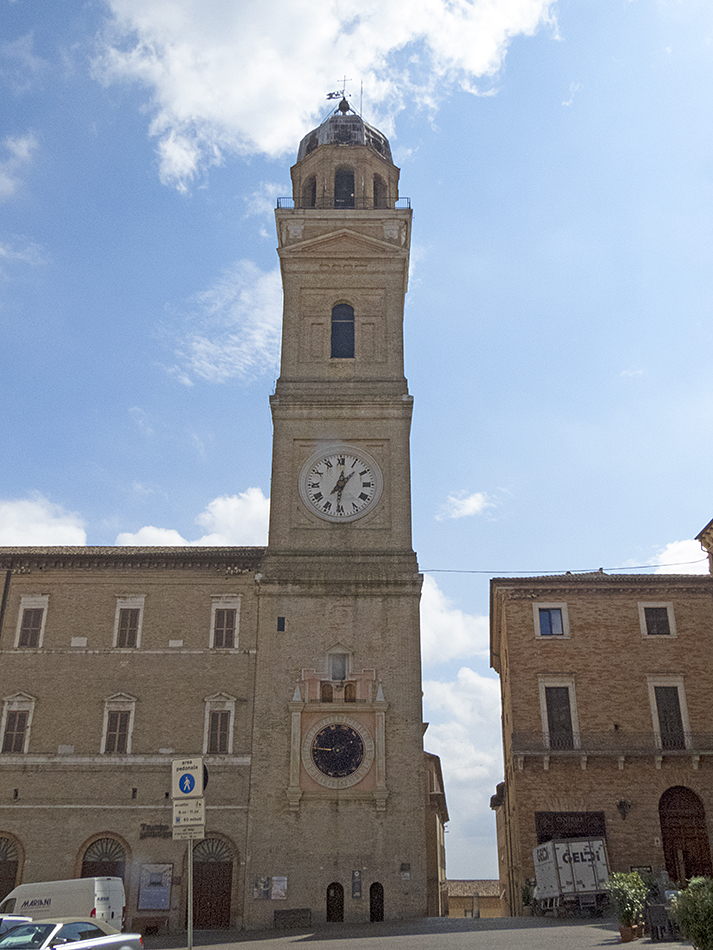
Although time and its measurement is a fundamental component of human life, a special type of clock which takes matters to the next level is the so-called
astronomical clock and whose purpose is not to measure time per se but to convey astronomical information and, in particular, the relative position of the
Sun and Moon as well as the zodiacal constellations and, in some cases, the position of the planets all as a function of time.
The oldest such effort to effectively emulate the overhead celestial sphere (ie a mini-planetarium) is the
Antikythera Mechanism which was discovered in 1901 totally by
accident by sponge divers off the coast of the Greek island of Antikythera. It has been dated to approximately 80 BC and it is believed to be the work of
Poseidonius of Rhodes. The Antikythera Mechanism is currently on display
at the National Archaeological Museum in Athens, Greece.
Note: Macerata is a small town in central Italy with a population of slightly over 41,000 residents. It boasts a university founded
in 1290 and is dominated by its central square, Piazza della Liberta (Liberty Square), where one will find an art gallery and art museum, a public library as
well as its characteristic 64-meter tall Torre Civica (Civic Tower) which is visible from anywhere within the town owing to the fact the square sits on the town's
tallest hill at an elevation of 315 meters.
The tower's construction was started in 1492 and was eventually completed by the architect Galasso Alghisi da Carpi in 1653. The astronomical clock was installed
between 1569 and 1571 by the master watchmakers Ippolito Ranieri and the brothers Giulio and Lorenzo Maria. The clock underwent a restoration in 2015. The clock
has an outer dial with the roman numerals I through XXIV indicating the hour of day using a gold pendant and is consistent with other efforts of the time which
also used a 24-hr representation. The next ring depicts the zodiacal constellations followed by a thinner ring descrbing the months of the year. The geocentric
model of the Solar System persisted at the time and whioh explains the presence of the Earth at the center of the clock with five surrounding and labelled
concentric circles representing the five known planets at the time and in proper order. Finally, surrounding the central globe representing Earth and the ring
for the orbit of the planet Mercury, a ring with the numbers 1 through 29 is used to describe the age of the Moon (synodic month).
Note: For a view of the astronomical clock using much greater focal length, please click
here and
here.
Note: For additional results involving astronomical clocks from around the world, please click
here.
|
Body: Sun Mass: 332,900 x Earth Mass Eq Diameter: 109.1 x Earth Distance: 149 million km RA / Dec: 23h 41m 41s / +89° 19' 51" Diameter: 32.16' Magnitude: -26.8 |
 |
Date: Sept 15, 2023 Location: Piazza della Liberta, Macerata, Italy Equipment: Canon PowerShot SX60 HS @ 5.96 mm / f8.0 Exposure: 1 x 1/1600 sec ISO 400 RAW Image Format 4768x3516 Image Size Continuous Servo Mode Manual Mode Software: Photoshop CS6 Processing: Brightness/Contrast Resampling JPG Compression |